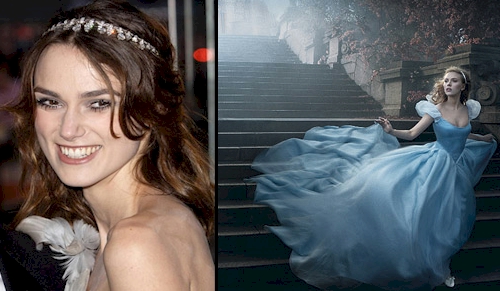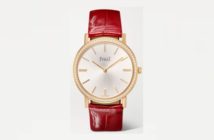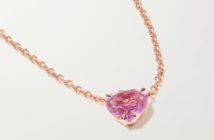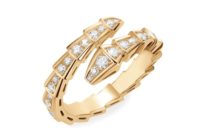
Tiaras were once the domain of royalty. Today, antique headpieces and their modern interpretations are being seen on everyone and anyone.
Pictured above is a tiara that sold for a record price of more than $2 million in June 2007. Made by Fabergé circa 1890, it features a pear-shaped center diamond weighing about 8 carats, and was from the collection of Italian Princess Maria Gabriella di Savoia.
The tiara trend may have been reinvented, as many things have, with Madonna.
For her 2000 wedding to Guy Ritchie, the singer donned an antique diamond tiara, and later donated it to charity. But model Stella Tenant also deserves credit for turning the tiara on its head. In a 2003 advertising campaign for French jeweler Chaumet, she wore one pushed back like a hairband, exuding an air of casual, decadent luxury.

Tiaras used to be the accessory of choice only for royal weddings, beauty pageants, and playing dress-up. The pieces were so passé that dealers would pry them apart in order to resell the individual gems, says Stephen Forward of Beverley R, a period-jewelry specialist at Grays Antiques market in London.
But over the past few years, the demand for tiaras and hair jewels has been growing.
Last September, actress Keira Knightley wore a Bulgari Vintage Collection diamond necklace as a tiara at the London premiere of Atonement. Scarlett Johansson, as Cinderella in a new Annie Leibovitz-photographed Disney ad, wears a 62-carat, $325,000 Harry Winston diamond tiara.

In June 2007, a diamond tiara made circa 1890 fetched a world-record auction price of more than $2 million at Christie’s London (pictured at top). It helped that the piece was made by Fabergé and hailed from the collection of Maria Gabriella di Savoia, an Italian princess. But the final price was still far above the $1.2 million high estimate. A year earlier, the Poltimore tiara, worn by Britain’s late Princess Margaret (pictured below) at her wedding, sold for $1.7 million to a Chinese collector.

“Recent interest in antique tiaras is partly due to the public realizing [they]are becoming scarcer,” says Raymond Sancroft Baker, jewelry director for Christie’s Europe. He has seen many a parent buy a tiara in anticipation of a daughter’s wedding—with the daughters being as young as five.
The London-based jeweler Leviev expects that “pins and hairpieces will make a great comeback” and is designing new hair jewels, according to a spokesperson. De Beers, Chopard, Bulgari, Garrard, and Moussaieff all report receiving requests for diamond headpieces and are responding by producing new designs and adapting older pieces.
“We’re noticing that we are taking more commissions for individual tiaras,” says a Garrard spokesperson. “Many are from international royalty, and there has also been an increase in sales to clients looking to buy pieces that will become future heirlooms.”
When it comes to the older jewels, tiaras that transform—with a few clicks and adjustments—into necklaces are the most popular, according to experts at Sotheby’s and Christie’s. Such flexibility can result in prices that are 40 percent higher than conventional pieces, Baker says.
Contemporary interpretations are gaining popularity as well. “The increasing interest in jewelry in general over the last few years has meant people are looking for new parts of the body to adorn with jewels,” says Nathalie Kabiri, founder of Kabiri, an edgy London jewelry gallery that sells to many New Yorkers via its website. “Hair jewels used to be [considered]girly, but now they’re cool and directional and important pieces of jewelry in their own right.”
Kabiri cites Andy Farrow’s “beautifully made pieces” and Malababa’s “relatively cheap” leather headbands (currently sold out) as some of her bestselling items. Cherry Chau offers bold pieces that mix carved steel with crystals (pictured, $110).

“Tiaras are like a pair of high heels that make you stand tall and upright so you don’t slouch,” says Andrew Prince, a jeweler largely credited with making the finest handmade tiara copies in Britain, with prices starting at several hundred pounds. “They are probably the most useless and yet the most wonderful piece of jewelry a woman can own.”



